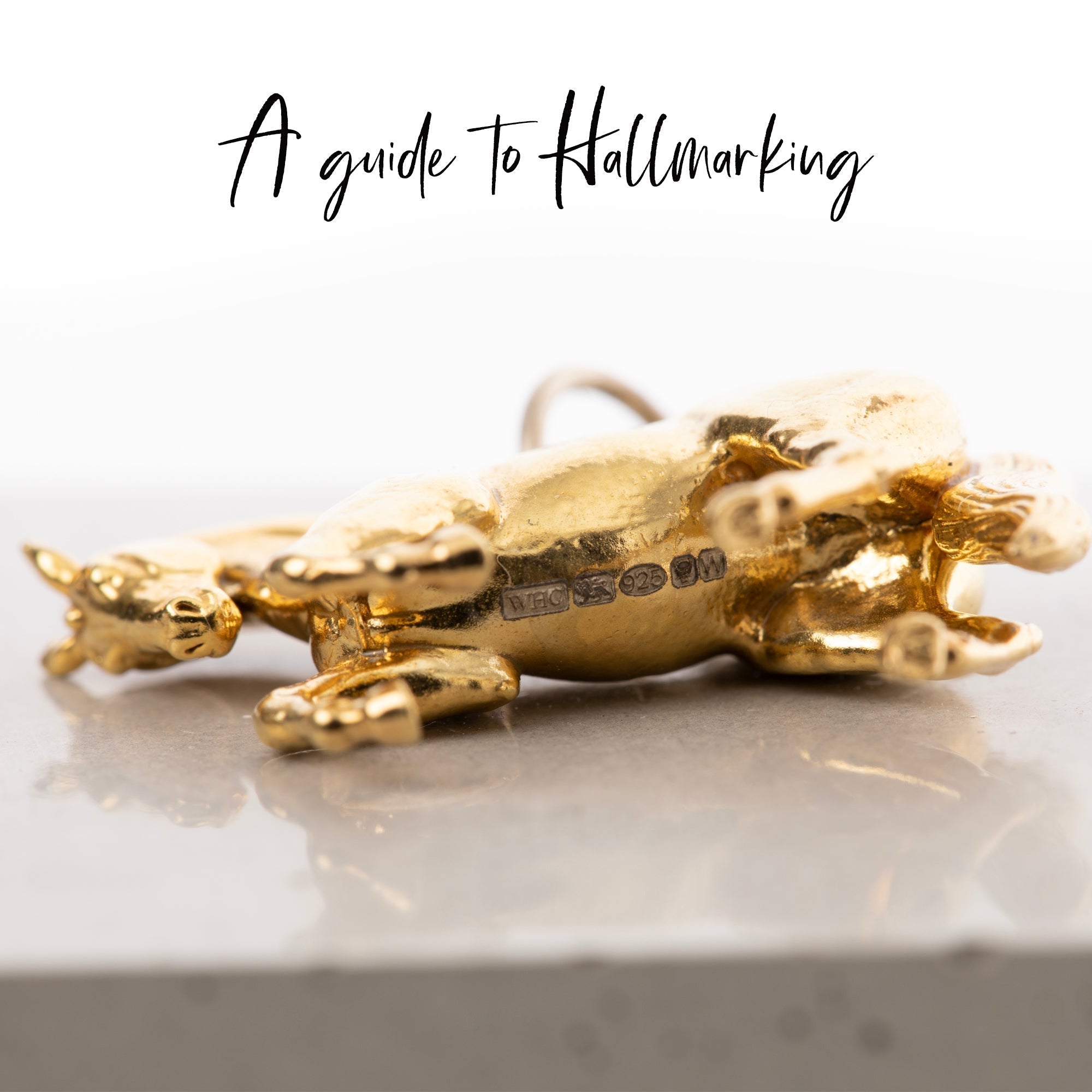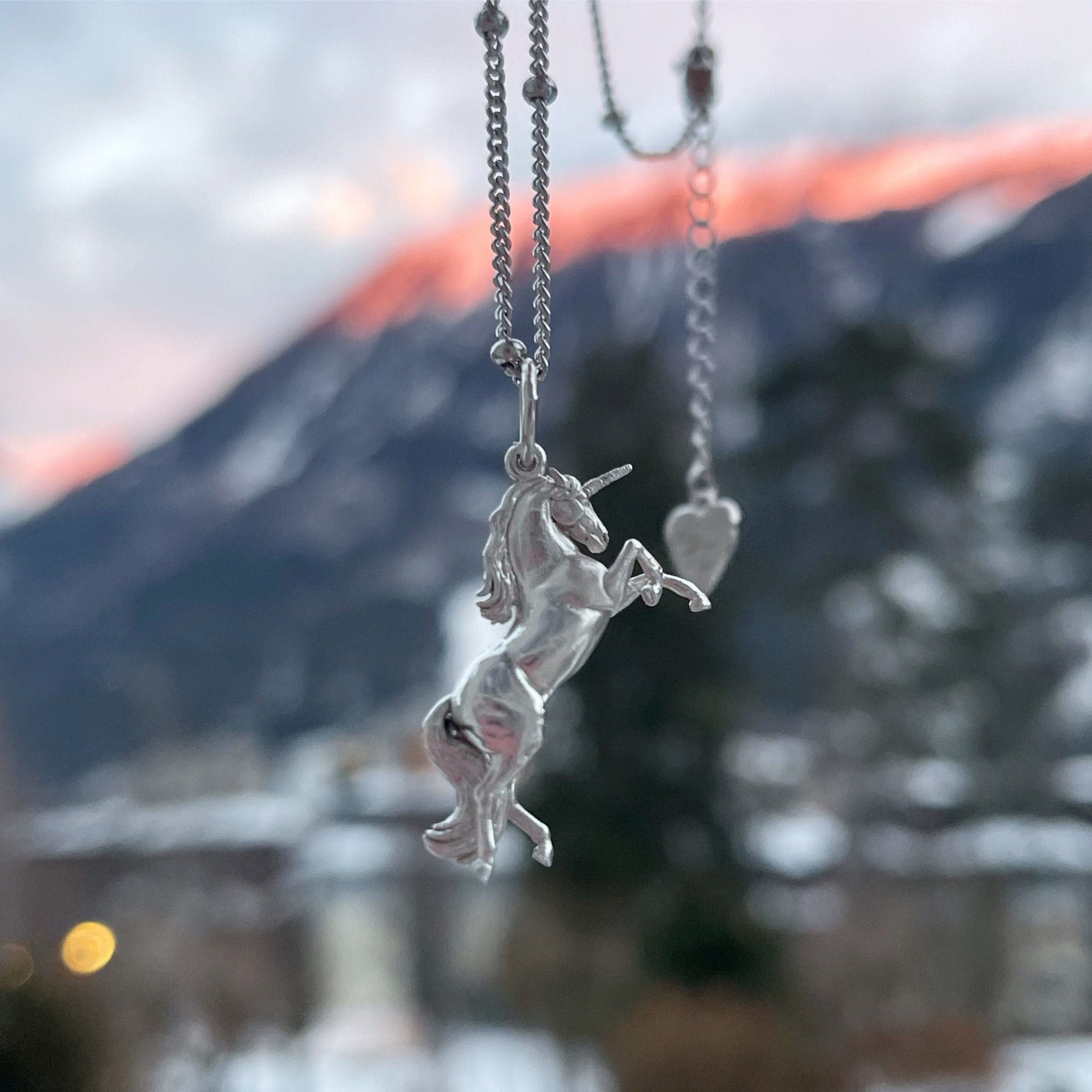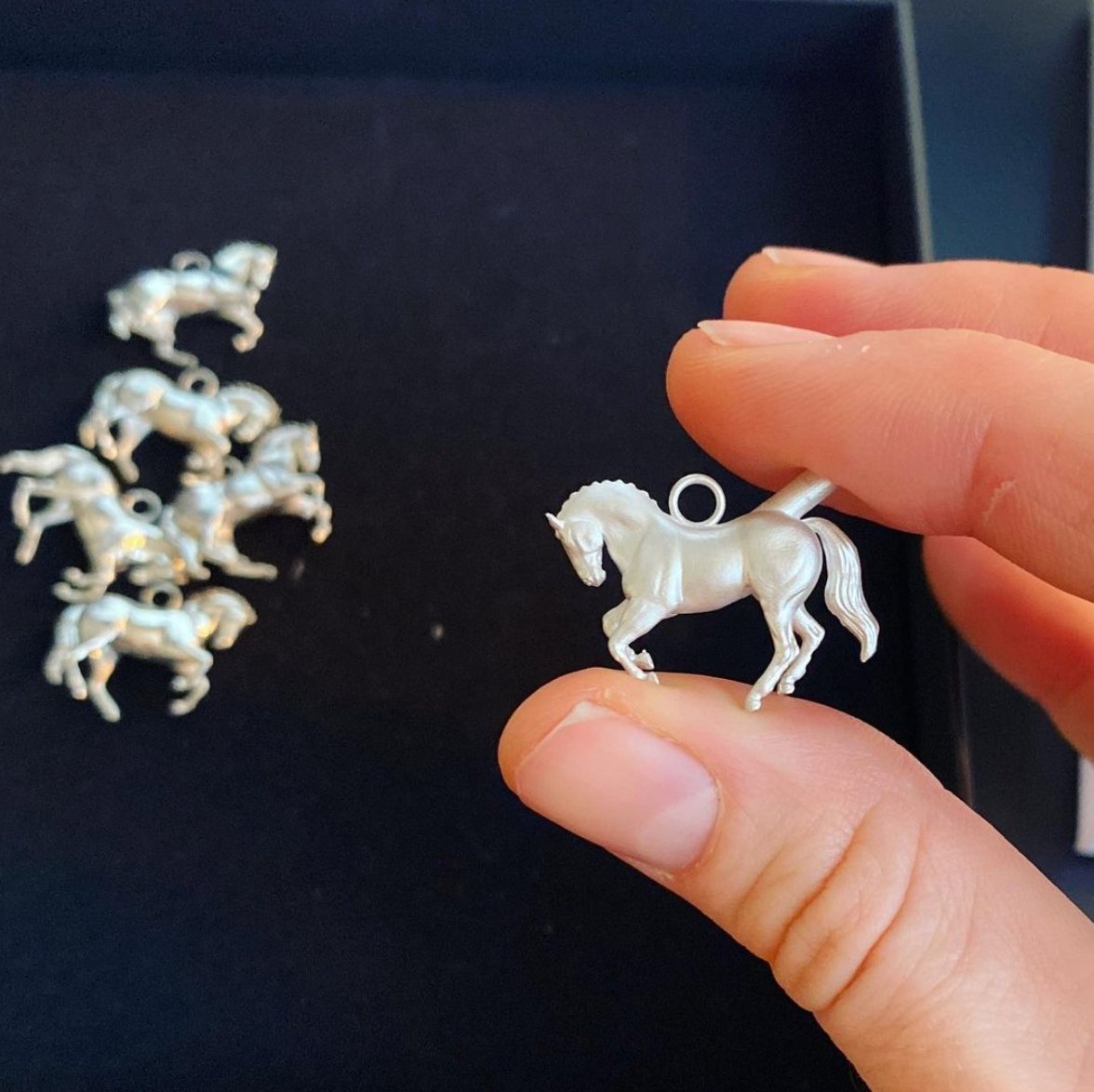
Hallmarking- What is it? And what does it mean?
Hallmarking, and the unique 'WHC' hallmark
When you purchase one of our lovingly crafted pendants in solid 9ct or 18ct gold, be sure to take a look at the belly of the horse. There you'll find the initials' WHC' alongside the fineness and assay office mark.
This is our own specially-registered sponsor's hallmark, that shows your jewellery has been created by Wild Horse Club.
All of our beautiful necklaces are hand-made in London. Our pendants are cast, hand-finished, plated, polished and finally taken to the assay office to be hallmarked – your guarantee that your pendant is of exceptional quality.
Want to know more about hallmarks and what the marks on your jewellery mean? Read on to find out more…

What is hallmarking?
All pieces of jewellery tell a unique tale.
A sparkling engagement ring passed down through the generations. A stunning bracelet given to a young girl as a birthday gift. A mysterious vintage brooch found at a bustling street market.
Take the time to look at the unusual little symbols on a piece of jewellery that you may own. These strange letters and numbers, or hallmarks, will help you find out more about where it came from, who made it and most importantly, what it is made from.

What is a hallmark?
A hallmark is a set of small marks branded on jewellery made of precious metals, like gold, silver, platinum or palladium.
It's rare that a piece of jewellery is made out of a pure precious metal, so they are usually combined with other types of metals.
For example, pure gold is very soft, so gold rings are typically alloyed with copper, silver or zinc to make them more durable. A hallmark would certify how much pure gold is in this ring, compared to other materials.
The hallmarks are added to the jewellery by assay offices, independent testers who check each piece and confirm it meets their standards.
Not all jewellery made from precious metals needs to be hallmarked, only those containing a certain weight of gold, silver, platinum or palladium.

The history of hallmarking
Hallmarking started in the 13th century to stop crooked goldsmiths from selling poor quality precious metals to unsuspecting members of the public.
In 1973, the Hallmarking Act was introduced. This made it an offence to describe jewellery as gold, silver or platinum if it hadn't been hallmarked. In 2009, the UK Government updated the act to include palladium, a soft silvery metal.
The hallmarks were originally hand-stamped onto the jewellery, but now they can be lasered on instead.
What do the different hallmarks mean?
If you don't know what the hallmarks mean, they can just look like a jumble of letters and numbers that are hard to understand.
There are three compulsory parts of a hallmark - the sponsor's mark, the assay office mark and the standard of fineness.


The sponsor's mark
Sometimes referred to as the maker's mark, this is between two and five letters surrounded by a shield shape.
A sponsor's mark identifies who made the jewellery, or brought it in for testing.
There are lists of sponsor's marks available on the internet, meaning that it is easy to find out who created your piece of jewellery.
The assay office mark
This is the mark of the assay office that assessed the piece of jewellery. There are four different assay offices in the UK, based in London, Birmingham, Sheffield and Edinburgh. This means you can see at a glance where the jewellery was sent to be tested.
London is represented by a leopard's head, Birmingham is represented by an anchor, Edinburgh is represented by a castle and Sheffield is represented by a white rose. As all of our pendants are assayed in London, you will find a leopard's head nestled after our unique sponsor's mark!
There used to be many more assay offices in the UK, including Chester, Glasgow, Newcastle and Norwich, but these have now closed down.
The standard of fineness
These numerical marks indicate the precious metal content of the jewellery and are measured by parts per thousand. The higher the number, the higher the content of precious metal in each piece.
As well as the number, you can tell what metal the jewellery is made of by the shape of the mark.
You may see more than one mark on your jewellery, which denotes when a piece of jewellery is made of mixed metals.
At Wild Horse Club, the fineness hallmark will depend on the pendant you choose. Our striking solid silver pendants have a silver hallmark, solid rose or yellow gold will have a gold hallmark. Plated pieces only carry the full hallmark of the core metal, in most cases that will be silver.
Optional marks
There are optional marks that the assay office can add alongside the three marks above.
- Traditional fineness symbols. These were used before the newer standard of fineness symbols were introduced in 1999. Although these don't tell you the precious metal content, they do tell you what precious metal the jewellery is made of
- The date letter. These letters symbolise the date that the jewellery was brought in for testing. Some people think this symbol denotes when the jewellery was created, but this is not the case. The date letter was compulsory until 1999, but can now be applied voluntarily if desired
Different countries have their own hallmark symbols, so if the symbols on your jewellery don't match the ones described above, it may have come from outside of the UK!
We hope that this short guide has given you insight into hallmarks and the exciting stories they can tell!
If there is anything else you would like to know about the hallmarks we use, please get in touch… we'd be happy to help.





Leave a comment
This site is protected by hCaptcha and the hCaptcha Privacy Policy and Terms of Service apply.